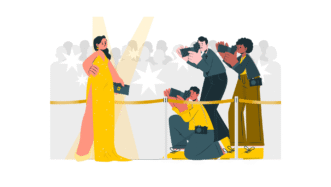LESSON OVERVIEW
The main objectives of this lesson are to:
- practise collocations with ‘need’;
- watch a video about Maslow’s hierarchy of needs;
- discuss needs and priorities from a critical perspective.
With this lesson, students can review collocations with ‘need’ (e.g. feel the need, no need to, no longer need, etc.), talk about things that are important to them and discuss different types of needs (e.g. physiological needs, safety needs, social needs, etc.). They explore Maslow’s hierarchy (theory that people should meet their needs in a particular order to be happy) and watch a video about the subject.
60 minSpeaking ClassUnlimited Plan
This is a Speaking Class worksheet. It includes a variety of tasks that let your students practise their speaking skills. This lesson format does not focus on grammar or vocabulary. Learn more about it here.
COLLOCATIONS WITH ‘NEED’
At the beginning of this lesson, students can do an extra activity to revise vocabulary. In the task, they match sentence halves to complete collocations with ‘need’ (e.g. meet my needs, basic needs, critical needs, etc.) in statements about personal needs and priorities (e.g. I need a holiday badly or I’m going to feel burnt out.). Then, students choose the sentence that they agree with most and add more details.
WARM-UP AND VIDEO
As a warm-up for this lesson, students think of things they can’t imagine their day without. Then, they say why they are so important to them. Following that, students rank the things they came up with into a pyramid based on their importance. Afterwards, they have the chance to practise collocations with ‘need’ and explain their choices. Next, students look at the different types of needs (e.g. physiological needs, safety needs, social needs, etc.) and add examples to each type. After that, they look at the types of needs again and complete a definition about Maslow’s hierarchy of needs. Subsequently, students watch a video about the topic and write down pieces of information that they have learnt or haven’t heard before.
DISCUSSION
At this point in this lesson, students read pairs of opinions about hierarchy of needs (e.g. I agree that social needs are the most important of all. OR I think social needs were more important for people in the past.). They choose the ones they agree with more and explain their choices. After that, students read facts and discuss questions about insights and developments related to Maslow’s hierarchy of needs. Then, they choose an area (e.g. education, healthcare, marketing, etc.) and think about how the theory is or could be applied there. Students can use collocations with ‘need’ and different needs (e.g. safety needs, social needs, self-esteem, etc.) in any order they think is correct.
Subscribe to unlock these and many other Standalone lesson lesson plans with the Unlimited planWORKSHEETS














Not only an interesting and versatile lesson to engage a wide base, but also right on time, just when I needed it midweek. Thank you for continuing to get content out at the pace that you all do. There is true value in this subscription.
Thank you so much for your feedback 🤗🤗
This lesson is fascinating from various perspectives. I’ve heard that our instinct to form social connections is even stronger than our desire to have children. I am sure my students will love it!
That’s great to hear! Let us know how your students like it 🙂
Great lesson Olia!
I can’t give you a like, don’t know if it’s my problem or if there’s a problem on the website. In fact, I couldn’t give a like to the other new lessons either.
Thank you for the feedback! And as for the ‘like’ feature, can you please email us at [email protected] with more details about the problem (i.e. what happens when you click ‘like’). Thanks!
I truly loved this class, it sparked very interesting discussions. Do you know where I can find the full version of her speech?
Thanks for your comment! Unfortunately, I couldn’t find the full talk. If you come across it, feel free to share it in the comments for other teachers who might be interested too! 🙂
amazing
🤗🤗🤗
I’ve used this lesson several times and it works wonders 🙂 – my students always have so much to say! Thanks.
That’s fantastic to hear, thank you 😊